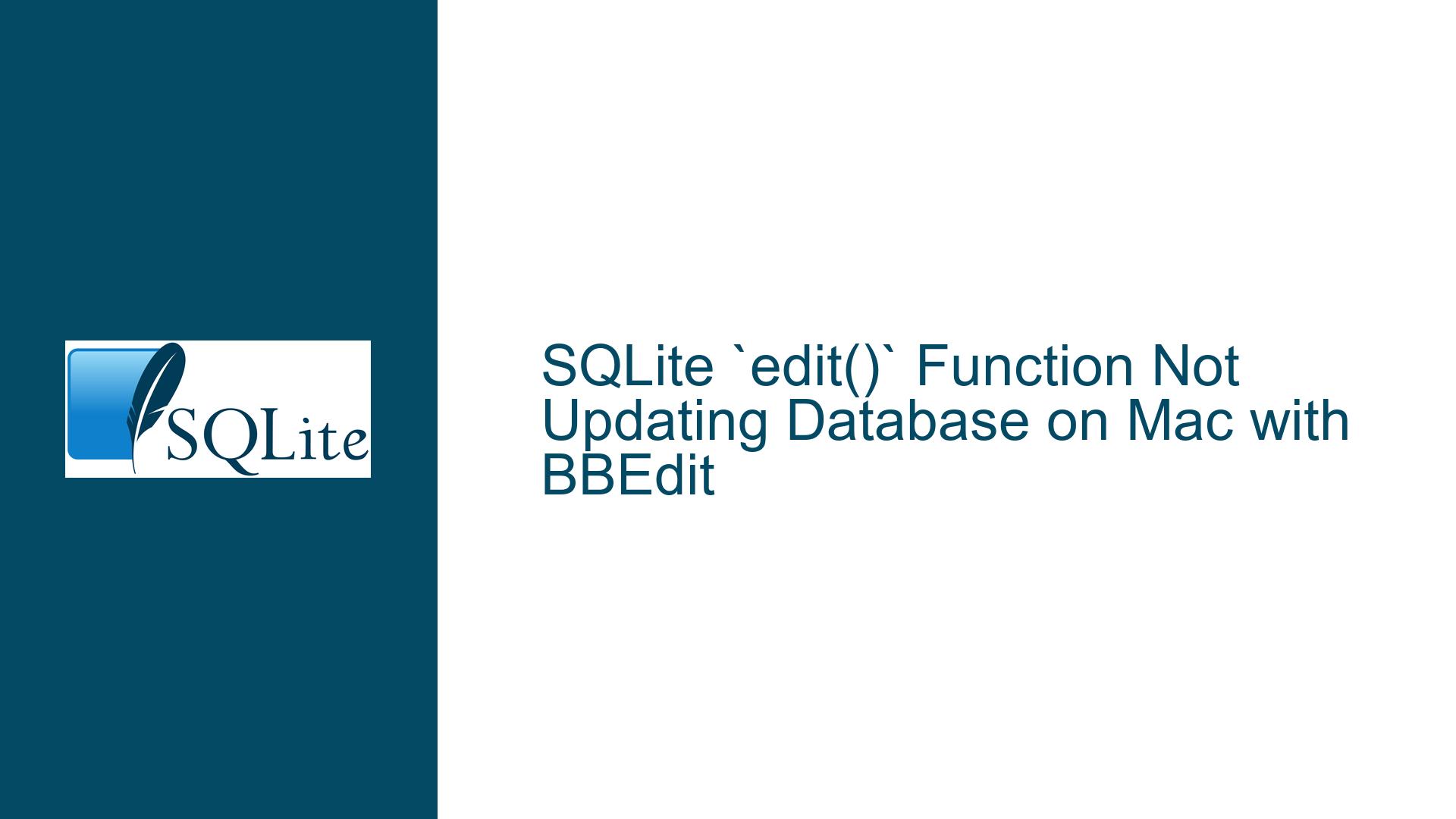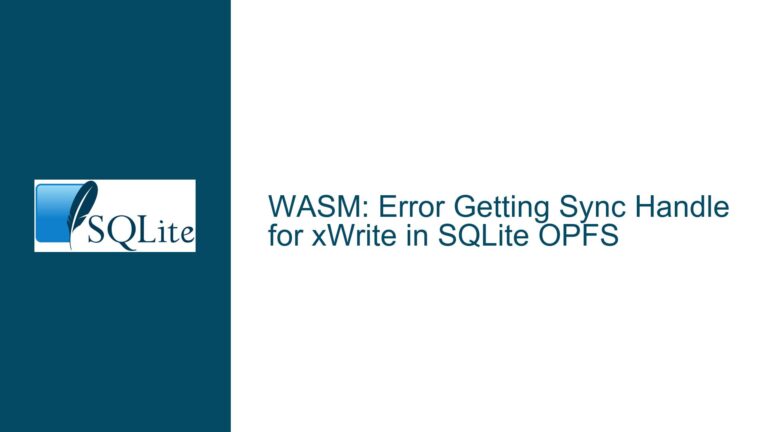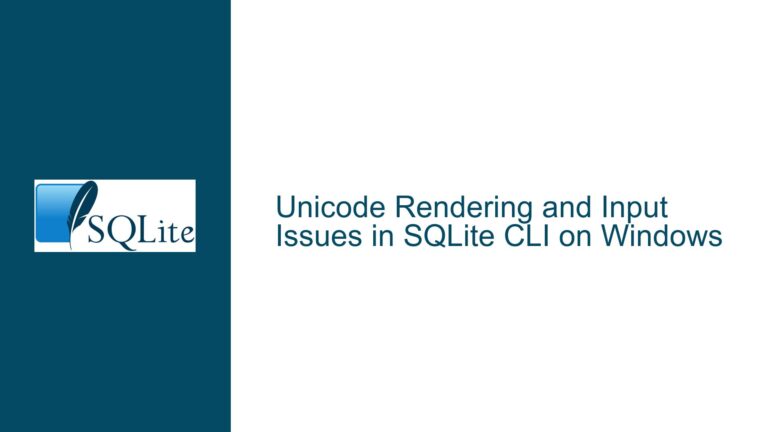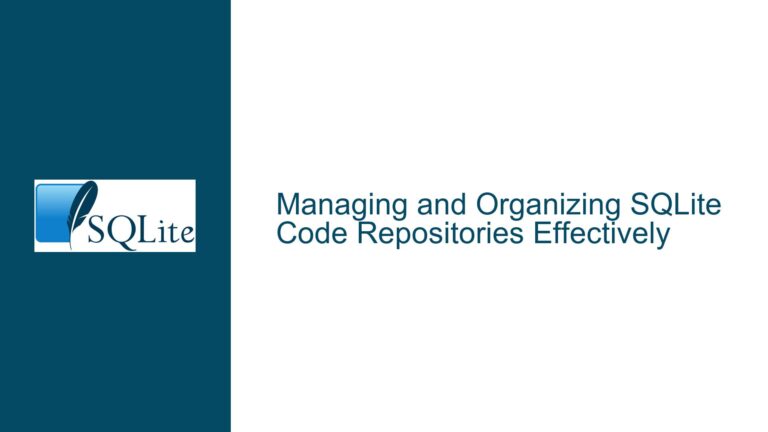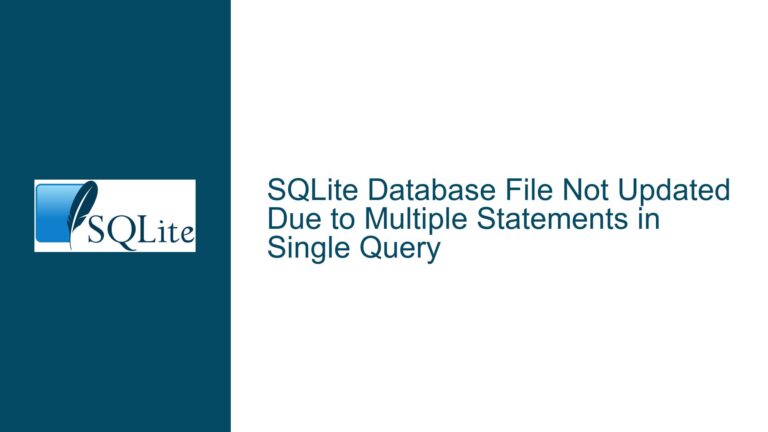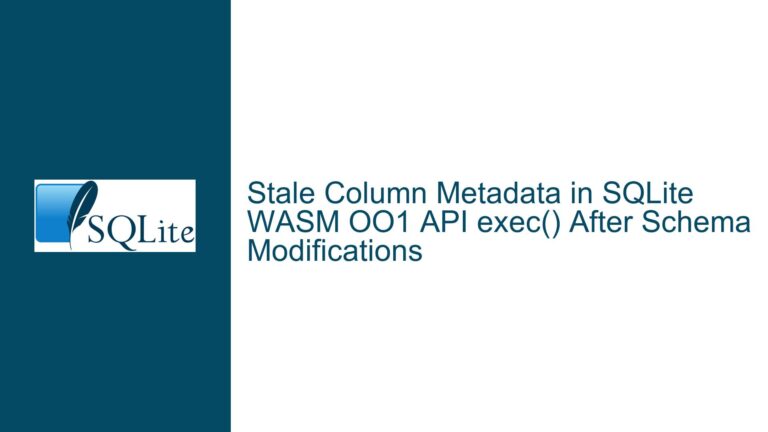SQLite `edit()` Function Not Updating Database on Mac with BBEdit
Issue Overview: edit() Function Fails to Update Database After Editing with BBEdit
The edit() function in SQLite is a powerful tool that allows users to interactively edit text fields in a database using an external text editor. However, when using BBEdit as the editor on a Mac, the function fails to update the database after the user saves and closes the editor. This issue is particularly perplexing because the editor (BBEdit) successfully opens the file, allows the user to make changes, and saves those changes to the file. Yet, upon closing the editor, the changes are not reflected in the SQLite database.
The problem appears to be specific to BBEdit, as other text editors like nano and cot (with the -w flag) work as expected. This suggests that the issue lies in how BBEdit interacts with the SQLite edit() function, particularly in how BBEdit handles the process of saving and closing files. The core of the problem seems to be related to the way BBEdit forks its processes and returns control to the calling process (SQLite) before the user has actually finished editing and saving the file.
Possible Causes: BBEdit’s Process Forking and Immediate Return
The root cause of the issue lies in the behavior of BBEdit when it is invoked from the command line. BBEdit, being a GUI application, does not follow the typical behavior expected by the SQLite edit() function. The edit() function assumes that the editor it invokes will be a command-line application that runs synchronously, meaning that the editor will not return control to SQLite until the user has finished editing and closed the file. However, BBEdit, like many GUI applications on macOS, forks a new process and immediately returns control to the calling process (in this case, SQLite). This immediate return means that SQLite assumes the editing process is complete and proceeds to read the file, which may not yet contain the user’s changes.
Additionally, BBEdit may not be writing changes directly to the file in a way that SQLite can immediately detect. Some editors, especially GUI-based ones, use temporary files or backup mechanisms that can delay or obscure the actual writing of changes to the file. This behavior can interfere with the edit() function’s ability to capture the updated content and apply it to the database.
Another potential issue is the lack of a proper command-line interface (CLI) shim for BBEdit that can force it to wait until the user has finished editing before returning control to SQLite. Without such a shim, BBEdit cannot be used effectively with the edit() function, as SQLite will always assume that the editing process is complete as soon as BBEdit is launched.
Troubleshooting Steps, Solutions & Fixes: Ensuring Synchronous Editing with BBEdit
To resolve the issue of the edit() function not updating the database when using BBEdit, several steps can be taken. The primary goal is to ensure that BBEdit behaves synchronously, meaning that it does not return control to SQLite until the user has finished editing and saving the file. This can be achieved by using BBEdit’s command-line interface (CLI) shim with the appropriate flags.
Step 1: Verify BBEdit’s CLI Shim Availability
The first step is to ensure that BBEdit’s CLI shim is installed and accessible from the command line. BBEdit provides a command-line tool called bbedit that can be used to invoke the editor from the terminal. This tool is typically installed in /usr/local/bin/bbedit or a similar directory. To verify that the bbedit command is available, open a terminal and type bbedit --version. If the command is not found, you may need to install the CLI shim from within BBEdit’s preferences or download it from the BBEdit website.
Step 2: Use the -w Flag to Force BBEdit to Wait
Once the bbedit command is available, the next step is to use the -w flag when invoking BBEdit from SQLite. The -w flag tells BBEdit to wait until the user has closed the file before returning control to the calling process. This ensures that SQLite does not attempt to read the file until the user has finished editing and saving it. The SQL command to use BBEdit with the -w flag would look like this:
UPDATE books SET notes = edit(notes, 'bbedit -w') WHERE id = 1;
This command tells SQLite to open the notes field for editing using BBEdit, and to wait until the user has closed the editor before proceeding. This should resolve the issue of the database not being updated after editing.
Step 3: Test with Other Editors to Confirm the Issue
If the above steps do not resolve the issue, it may be helpful to test the edit() function with other text editors to confirm that the problem is specific to BBEdit. For example, using nano or cot (with the -w flag) should work as expected, as these editors are designed to run synchronously and do not fork processes in the same way that BBEdit does. If these editors work correctly, it further confirms that the issue lies with BBEdit’s behavior and not with SQLite or the edit() function itself.
Step 4: Explore Alternative Editors or Workarounds
If BBEdit’s behavior cannot be modified to work with the edit() function, it may be necessary to explore alternative editors or workarounds. For example, using a different text editor that is known to work well with SQLite’s edit() function, such as nano, vim, or cot, may be a viable solution. Alternatively, if BBEdit is the preferred editor, a custom script could be written to handle the editing process outside of SQLite, and then update the database manually after the editing is complete.
Step 5: Modify the edit() Function to Handle Asynchronous Editors
For advanced users, another potential solution is to modify the edit() function itself to handle asynchronous editors like BBEdit. This would involve writing a custom version of the edit() function that can detect when the editor has finished writing to the file, even if the editor returns control to SQLite immediately. This approach would require a deep understanding of SQLite’s internals and the ability to write custom C code, as the edit() function is implemented in SQLite’s source code.
Step 6: Ensure Proper File Permissions and Paths
Finally, it is important to ensure that the file being edited by BBEdit has the correct permissions and is located in a directory that SQLite can access. If the file is located in a directory that requires elevated permissions, or if SQLite does not have permission to read or write to the file, the edit() function may fail to update the database. Checking the file permissions and ensuring that the file is located in a directory that SQLite can access should be part of the troubleshooting process.
Conclusion
The issue of the edit() function not updating the database when using BBEdit on a Mac is primarily caused by BBEdit’s asynchronous behavior and its immediate return of control to SQLite. By using BBEdit’s CLI shim with the -w flag, it is possible to force BBEdit to wait until the user has finished editing before returning control to SQLite, thus ensuring that the database is updated correctly. If this approach does not work, testing with other editors or exploring alternative solutions may be necessary. Ultimately, understanding the interaction between SQLite and external editors is key to resolving this issue and ensuring that the edit() function works as intended.
